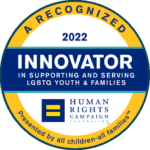Adoption is a beautiful way to grow your family, regardless of the path that leads you to the process
by Erin Celletti Updated 12/23/17
You may have seen adoption in action recently on shows including This Is Us, Grey’s Anatomy, and Teen Mom or included in open narratives from celebrities sharing (and gushing over) their most personal experiences, like the Today show’s Hoda Kotb and country singer Thomas Rhett. While no two adoptions are the same, all lead to love.
If you find yourself considering adoption, your thoughts, feelings, and questions can feel a bit overwhelming, and we’re here to help. We chatted with Katherine Foley, director of outreach for Spence-Chapin, a licensed and accredited nonprofit agency that has been offering adoption services for over 100 years, for expert insight on the most important parts of the adoption process.
First Things First
Couples that are toying with the idea of adoption must first ask themselves: What type of child do we want to adopt? Meaning, as Foley advises, “Does this person or this couple want to parent a baby, toddler, or school-age child? Do they want to adopt siblings? A child born in the United States or from another country? Is this person or couple open to parenting a child with a special need?” As you begin to work through these decisions, it will help guide your path to adoption.
Your Options
In researching your options, the good news is that most people can adopt, contrary to popular misconceptions. “Married couples, unmarried couples, LGBTQ parents, single women, and single men can adopt,” Foley says. “People who are not parents, those who are already parenting, as well as those who are transitioning out of fertility treatments can adopt. Families of all ages, income levels, ethnicities, and religions adopt.” She adds, “Truly, the one thing that all adoptive families have in common is that they want to be parents—and from there they are as diverse as the kids themselves.”
International or Domestic
Adoptive parents can adopt within the country (domestic) or from outside of the country (international). Foley explains, “In international adoption, a child born outside of the United States is adopted by an American citizen. American families adopt children waiting for adoption from many countries around the world. The Department of State oversees international adoption in the United States, and their website provides information about accredited agencies, adoption statistics, and country information.”
With regard to domestic adoption, a child born in the United States is adopted by a person who is also living in the United States. Foley explains that options within domestic adoption include “private adoption through an agency or attorney and adoption through foster care.” She adds that there are many children in the United States in need of adoption.
Open or Closed
There are also both open and closed adoptions, which look and feel very different from one another. In a closed adoption, birth and adoptive families do not have an ongoing relationship.
“In an open adoption, birth and adoptive families have a relationship and often agree to share photos, emails, or updates periodically,” Foley says. “Open adoption is an opportunity for the birth and adoptive parents to develop a relationship that will benefit the adoptee.” Foley also adds that Spence-Chapin encourages open adoption. She says research (in particular a 2012 study by the Donaldson Adoption Institute) has shown open adoption to be beneficial for all members of the adoption constellation (birth parents, adoptive parents, and adoptees).
Resources
Throughout the adoption process, there are ample resources available for guidance, advice, legal and financial assistance, and more. Foley highlights the importance of communication, noting that it’s helpful to “hear from people who already have a connection to adoption—adoptees, birth parents, and adoptive parents. Adoption-focused online videos, workshops, books, and articles highlight these voices.”
In regard to local resources, she adds that adoptive parents can seek “a support group, information meeting, or social event to meet people who have adopted and learn more about resources available in their community for adoptive families. Spence-Chapin’s Modern Family Center provides a community that understands and supports all members of the adoption community.”
Be Prepared
As with most things, being prepared is essential; as Foley puts it: “Knowledge is power.”
She explains, “Learning about children in need of adoption, possible adoption pathways and associated fees, as well as local resources allows a prospective adoptive parent to be prepared when he or she is ready to start the adoption process “
A basic understanding of the process is also imperative, as it varies by state and country. Generally speaking, Foley describes, the process will begin with a home study, and then, “depending on the adoption pathway, a parent may wait a few months or a few years to be matched with a child, either by being selected by a birth family or by an approved agency (here or abroad).” The process is finalized in court either in the U.S. or abroad, and then Foley adds, “Ideally the adoptive parents have post-adoption services locally to support their family for their lifetime.”
Best Advice
Foley explains that while navigating the process and making important decisions, it is important to remember that “there are many children here and around the world waiting to be adopted; take the time you need to research possible adoption pathways and the children in need of adoption to make sure you are prepared.” Foley suggests attending information sessions, which folks can do either in person or online. For example, Spence-Chapin hosts a free Adoption 101 webinar every month for prospective adoptive parents.
And as with many major life decisions, that support is key. “All families need support!” Foley says. “Like all parents, adoptive parents need a community that supports their family. There is helpful information online to help pediatricians, teachers, social workers, and therapists learn about adoption and become adoption-competent to support their communities.”





